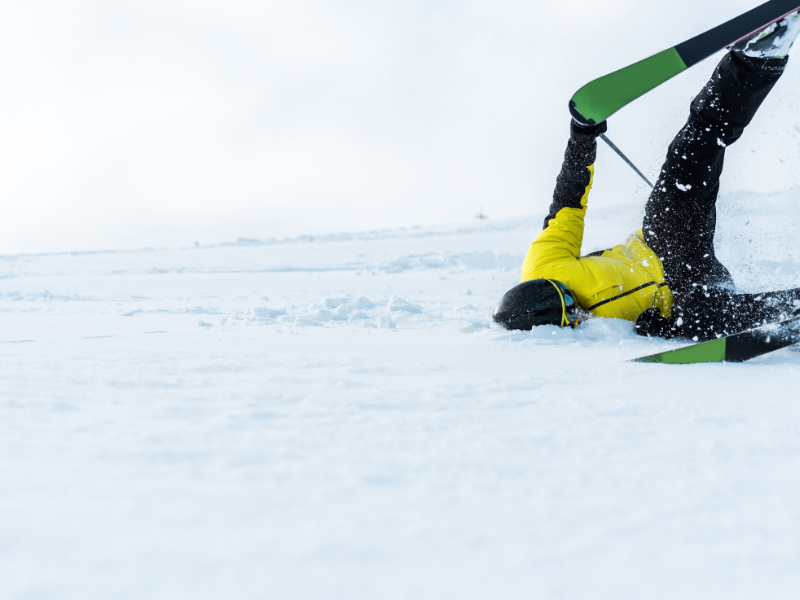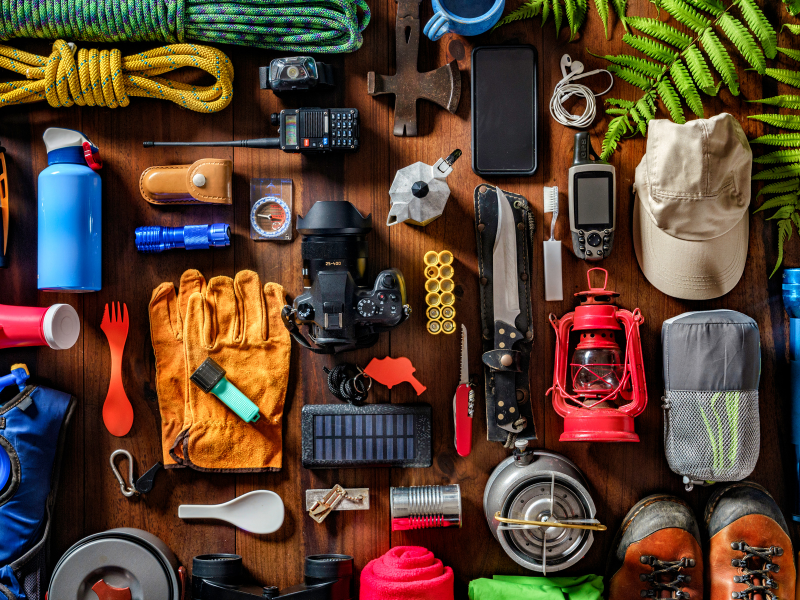With the astronomical rise in helmet usage in the past twenty years, skiers and snowboarders have made big changes to safety on the slopes. But even the best-intentioned still struggle with the concept that a helmet isn't built to last your whole lifespan - each one has a shelf-life, and there are five tell-tale signs of when you should replace your helmet.
In addition to a serious fall or visible damage, you should replace your ski or snowboard helmet every 3-5 years, or based on your manufacturer's recommendation. Your helmet's fit, climate exposure, and impact history also play important roles in the replacement timeline.
Think of age as the last possible sign that you need to replace your helmet, whereas the others act as signals to replace it beforehand. All five have clear giveaways though, so let's look at what you need to keep an eye out for.
5 Signs You Should Replace Your Ski or Snowboard Helmet
1. Age - Your Helmet Is Older Than The Manufacturer's Recommendation
The most important sign to replace your helmet is age. Depending on the brand, most helmets are designed to be effective for 3-5 years before losing their ability to protect you in a crash.
A lot happens in those years - heat, cold, sweat, sunlight - all of which take their toll on the helmet's structure and materials. It all comes down to how the helmet is constructed to protect you.
How A Helmet Saves You In A Ski or Snowboarding Collision
There are essentially three parts to your helmet - the hard outer shell, the middle protective liner, and the inner liner that comes into contact with your head.
In a crash, the hard shell takes the initial impact and spreads the force over a larger surface. The protective liner then crushes to absorb more energy before it reaches your head.
The innermost layer is designed to be soft and comfortable against your head, but also to grip the helmet so it doesn't move around or come off in a fall.
All of these layers work together to dissipate the force of an impact and protect your head from serious injury, but over time they break down and lose their effectiveness.
How to Tell Your Helmet's Recommended Replacement Date
On the inside of your helmet, look for a sticker or tag from the manufacturer - it will have the recommended replacement date. You'll also find a production date as well - and there are typically limitations to age based on production date as well.
If you can't find it, give the company a call or check their website - they should have that information readily available.
You might be thinking, "How convenient - a helmet manufacturer is claiming there's a shelf-life to my helmet so I have to buy another." It's not necessarily based on corporate profit though.
The protective and inner liners are typically made from EPS, a foam that can tend to shrink over time, even in the most stable environments.
This is one of the reasons manufacturers put an age to a helmet.
2. Fit - The Helmet Shape or Size Doesn't Suit You
As you'd expect, if your kid has hit a growth spurt since the last helmet use, it's time to re-examine the fit. But outside of the obvious, there are a few other usual suspects that cause improper helmet fits.
For the rest of us though, a growth spurt isn't an option, well sort of. If your hair has grown out, or you buzzed your head since last season, this can impact your fit. Or, perhaps you've moved into a different climate, where your buff is no longer needed, and you've ended up with a looser helmet.
And of course, there is certainly a large segment that just had the wrong fit from the start.
These scenarios and others require some adjustments to your helmet. And if your dial or ratcheting doesn't do the trick, don't force the issue and gamble the helmet for a run. It's time for a replacement.
The main thing to look for is pressure points - any areas where the helmet is digging in or sitting too low on your head. If you have long hair, make sure it's not sliding around underneath the helmet and creating or affecting the fit.
Although there are basically only three steps to making sure you have a properly fitting helmet, the slopes are littered with people with gapers gap. If you need a refresher, no worries, here's a quick three-step guide on how ski and snowboard helmets should fit.
3. Collisions: Your Helmet Saved Your Life
Remarkably, some people who end up needing their helmets after a rough fall, still consider getting back out there without a replacement - but it happens. If you've had a collision - even a minor one - in which your helmet took any impact, it's time for a replacement.
This is non-negotiable.
The protective layers of your helmet (the EPS foam) have been crushed and will no longer provide the level of protection they were designed to.
It's a bummer having to shell out for a new one, but you've already proven the value of having a helmet that works at this point, so hopefully, no additional argument needs to be made.
Dents, cracks gouges, and flat spots are a clear indication you need a new helmet, but not all damage will be visible, so don't rely solely on a quick spot check to validate the continued use of a helmet after a serious fall.
4. Minor Impacts: Your Helmet Had Some Falls At Home
Remember that time you were loading up your skis and your helmet fell hard on the driveway? Well, maybe that one instance didn't necessarily do any serious damage, but if it's happened a few times, or even just once in a hard fall and you're not sure, it might be time to get a replacement.
This one is a bit of a death by a thousand cuts, and perhaps more of a caution for how you care for your helmet during the off-season.
The hope here is that you take extreme care of your helmet even when you aren't wearing it, but we all know that's not always the case. Like dropping it, or allowing it to get crushed in storage. These seemingly small impacts can do some serious damage, so if you're not sure about the condition of your helmet, it's probably best to replace it.
5. External Factors: Storage Conditions, Wearing Conditions, Climate, etc.
It's wild to think that some of the biggest factors that affect the replacement timeline of a helmet happen when you aren't even wearing it. And one of the invisible culprits is nature.
You might not think that hot and cold temperatures can affect the performance of your helmet, but they absolutely do.
Exposing EPS foam to extreme temperature swings - both hot and cold - and dramatic changes in humidity can cause the material to break down and degrade more quickly. So if you're someone who likes to leave their gear in the garage all year it might be time to get a new helmet.
Another overlooked aspect is chemicals - what you might have in your hair or sunscreen sweating into your helmet.
You might not think about it, but things like hair products, makeup, and sunscreen can compromise some materials.
If Any Doubt, Replace Your Helmet
The point of this article wasn't to instill fear, but more so to help you understand that beyond the most obvious reason for replacing a helmet, falling and damaging it, there are a few other factors to consider when it comes to the longevity of your shell and noggin.
Storage conditions, the accumulation of minor falls and bumps, the manufacturer's suggested replacement date, and just general fit all play critical roles in protecting your head.
It's important to remember that a ski or snowboard helmet is designed as a single-use item. So, if you're still questioning whether or not it's time for a new one after reading this, err on the side of caution and get a new helmet.



